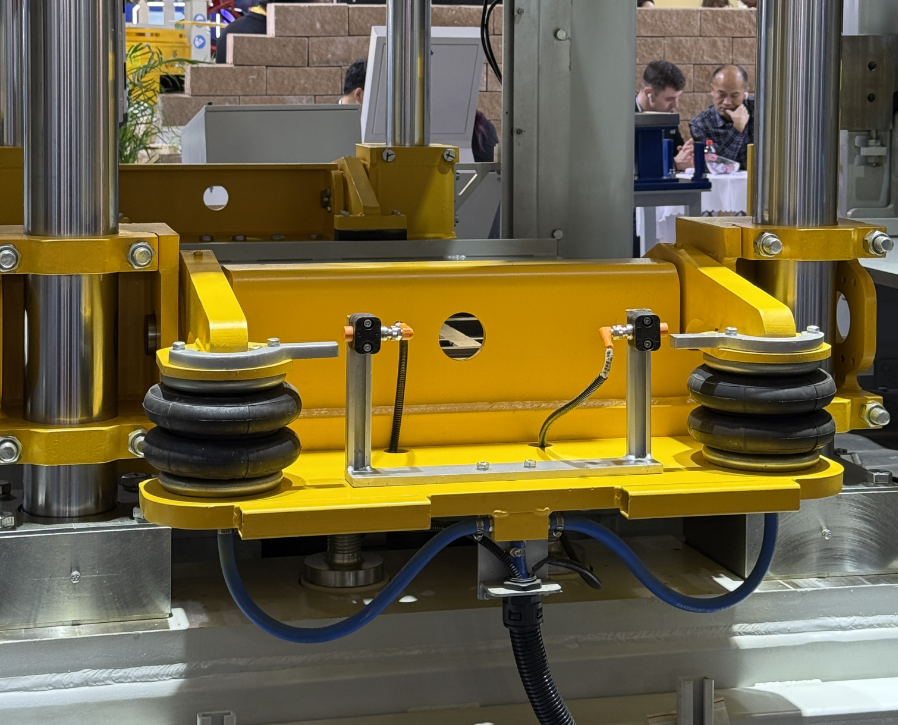Why Are Air Springs Revolutionizing the Heavy-Duty Equipment Industry?
Heavy-duty machines suffer from instability and shock—air springs are transforming how we handle vibration, load, and comfort in extreme working conditions.
Air springs use compressed air to reduce vibration, increase load adaptability, and enhance system longevity. With flexible structure and smart pressure adjustment, they outperform traditional steel springs across all heavy-duty scenarios.
Curious how air spring suspension systems outperform traditional systems? Let’s dive into the details of this game-changing technology.
What Are Air Springs and How Do They Work in Heavy-Duty Equipment?
Air springs are flexible rubber components filled with compressed air to absorb shock and isolate vibrations. In heavy-duty machinery, they cushion load impacts, improve suspension, and reduce equipment fatigue.
Air spring systems rely on internal air pressure to maintain height and balance. When loads shift, the air adjusts automatically, creating a smoother and more efficient response than steel springs.
The use of air spring suspension systems in construction vehicles, mining equipment, and agricultural machinery has proven especially valuable, increasing both comfort and mechanical longevity.
What Is the Purpose of an Air Spring?
Air springs are designed to reduce vibration, control motion, support variable loads, and protect equipment from mechanical stress and fatigue.
By isolating vibration, air springs enhance equipment life and operator comfort. Their ability to adapt to changing loads also supports consistent performance under fluctuating conditions.
From dampening the effects of rough terrain to minimizing structural damage from continuous motion, air springs serve as essential components in modern vibration management.
Which Design Air Spring Is Most Commonly Used in Heavy-Duty Trucks?
Rolling lobe and convoluted (bellows-type) air springs are the most widely used designs in heavy-duty trucks due to their load capacity and flexibility.
Rolling lobe types offer greater stroke and smoother response, ideal for high-speed transport. Convoluted designs are simpler, offering durability and cost efficiency in rugged environments.
Both types are key in air spring suspension systems, chosen based on required deflection range, space constraints, and load capacity for different truck configurations.
How Do Air Springs Improve Equipment Stability and Load Handling?
Air springs actively balance uneven loads and reduce vibration, preventing shocks from damaging equipment or disrupting workflow.
The air spring system adjusts internal pressure to match the load, maintaining consistent height and improved wheel alignment. This optimizes fuel efficiency and reduces tire wear.
In cranes, dump trucks, and loaders, air spring suspension improves traction, reduces bounce, and keeps equipment stable on uneven terrain—resulting in safer and more productive operations.
What Are the Advantages of Air Spring Suspension Over Traditional Systems?
Air spring suspensions offer smoother rides, adjustable height control, and better shock absorption than metal springs.
Traditional springs are rigid and respond poorly to varying loads. Air spring suspension systems adjust dynamically, reducing impact and providing superior comfort and precision.
Air suspension also enables electronic control integration, allowing operators to manage height and pressure settings for different terrains or cargo weights with minimal effort.
Are Air Springs Worth It for Industrial Applications?
Absolutely. Though the upfront cost is higher, air springs offer long-term savings through lower maintenance and reduced wear on other components.
They also minimize downtime by protecting delicate machinery from damage caused by shock and vibration.
In logistics, construction, and manufacturing, the performance and durability benefits of air springs translate to fewer repairs, better productivity, and improved operator safety—making them a solid investment.
What Are the Disadvantages of Air Springs?
While versatile and effective, air springs do come with some limitations, such as susceptibility to air leaks and a need for periodic maintenance.
They also require a functioning air compressor system, which adds complexity and cost.
In remote or harsh conditions, damaged air lines or valve failures can cause downtime. However, these issues are manageable with regular inspection and quality components.
How Long Do Air Springs Last in Heavy-Duty Applications?
Air springs in well-maintained systems typically last 80,000 to 100,000 miles or 5 to 7 years in demanding industrial applications.
Their lifespan depends on load frequency, operating environment, and maintenance practices.
When incorporated into robust air spring suspension systems, longevity improves with protective bellows, anti-abrasion coatings, and vibration-resistant fittings, reducing long-term ownership costs.
What Is the Life Expectancy of an Air Spring?
Under optimal conditions, the expected lifespan of an air spring ranges from 5 to 10 years.
Rubber quality, system pressure consistency, and contamination levels are the key influencing factors.
Using premium materials and adhering to best practices in the air spring manufacturing process significantly extends durability, ensuring safer and more efficient equipment operation.
When Should Air Springs Be Replaced?
Air springs should be replaced if there are visible cracks, leaks, sagging, or when performance decreases under normal loads.
Routine inspections can catch early signs of failure before they impact operations.
Scheduled replacement intervals, especially in fleets or continuous-use machinery, prevent costly breakdowns and maintain system efficiency.
How Long Are Air Springs Designed to Last?
Air springs are engineered for a designed service life of 5–10 years under rated load and pressure conditions.
Quality-controlled manufacturing ensures that components meet or exceed industry standards for wear, fatigue, and pressure resistance.
In modern factories, the air spring manufacturing process includes rigorous stress testing, hydrostatic testing, and simulation cycles to predict and guarantee life span.
What Are the Different Types of Air Springs Used in Industrial Equipment?
The main types are convoluted (bellows), rolling lobe, and sleeve air springs—each offering different stroke lengths and load capabilities.
Bellows are compact and durable; rolling lobe types provide longer strokes; sleeve types are often used in light-duty systems.
Choosing the right type depends on application-specific needs like mounting space, required vibration isolation, and dynamic force range.
How Is the Air Spring Manufacturing Process Tailored for Industrial Use?
Industrial air springs are produced using multi-layer rubber reinforcement, steel end plates, CNC-cut mold forms, and precision air valves.
Automated systems ensure consistency, while fatigue and burst testing verify performance under extreme conditions.
The air spring manufacturing process at factories like Songjiangflex involves strict QA procedures, rubber composition analysis, and vibration simulations—ensuring top-tier reliability for heavy-duty applications.
Summary
Air springs offer unmatched flexibility, durability, and performance—key elements redefining how the heavy-duty world handles pressure, weight, and vibration.






